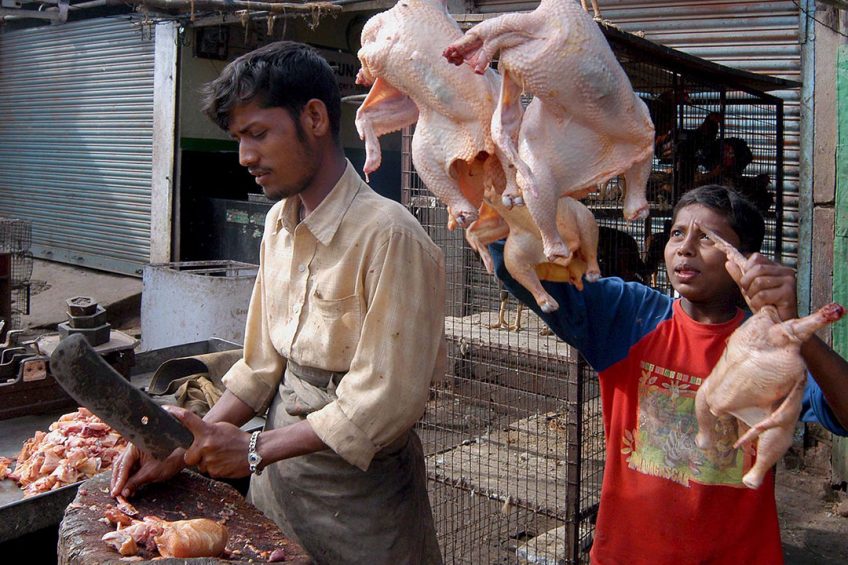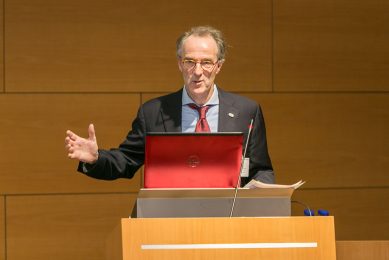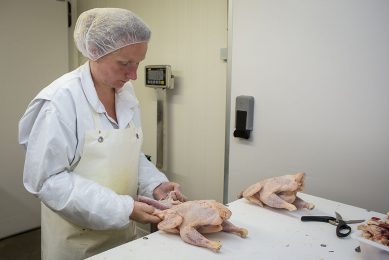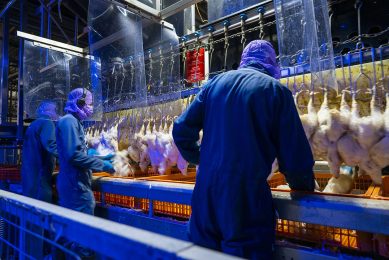Coronavirus rumours cost India’s poultry dearly

Speculation and rumours on India’s social media platforms over a possible avian link to the deadly coronavirus has dented poultry sales and put the industry in a pickle. Government help is needed to prevent a catastrophe.
Millions of small poultry farmers reeling
Millions of small poultry farmers across the country are reeling after poultrymeat sales crashed by 80% following false claims that chickens are carriers of the coronavirus. The states of Maharashtra, Karnataka, Odisha and Andhra Pradesh appear to be worst affected with farmers resorting to panic sales and some even going as far as culling chickens.
India’s weekly production of broilers is in the range of 750,000 live birds, or 300 million a month.”
India’s poultry sector lost US$ 1.5 m per day
First estimates are that India’s poultry industry has been losing US$ 1.5 million a day due to lower prices since early January. More than 25 million farmers earn their income in some form of poultry business in India. The Indian poultry sector produces about 4 billion broilers and 93 billion eggs a year and has been growing at between 6-8% per annum. However, the recent crisis has severely destabilised the sector.
Poultry farms seek government assistance
Amid cries for help, poultry farmers are seeking government assistance, stating that the Covid-19 crisis appears to be more widespread in India than the bird flu outbreak of 2006 which was restricted to the western part of the country. Many farmers say it has become untenable to keep any of their livestock since they are unable to feed them. That led several farming bodies to ask the government to extend some form of subsidy to poultry farmers who are unable to pay electricity bills and local taxes. Some chicken shop owners with more than 2 outlets have closed 2, saying it has become difficult to pay employees’ salaries.
“India’s weekly production of broilers is in the range of 750,000 live birds, or 300 million a month,” says Shankar Waghmare, a poultry farmer in Dahanu district in Maharashtra. “With average production costs of US$ 1 per kg and realisations at US$ 0.33, the losses now work out at US$ 1.35 per 2-kg bird or US$ 405 million per month,” he said.
Comparing Covid to H5N1 outbreak
A similar crisis was last witnessed in 2006-2007 when chicken consumption was affected by the H5N1 avian influenza, Waghmare notes. At that time, the Maharashtra government had paid farmers US$ 0.54 for every bird culled. “This crisis is worse. The government should instruct banks to come to the rescue of the industry. This is an ideal time to announce a one-year interest holiday, as opposed to a mere restructuring of loans through rescheduling payments,” he added.

The poultry industry in the state of Maharashtra has incurred losses to the tune of US$ 1.5 billion due to the coronavirus scare. Sales have slumped, especially since 4 February when rumours linking the coronavirus to chicken consumption started to gain ground on social media. Daily sales of chicken crashed from 3,000 tonnes a day to less than 2,000 tonnes a day. The situation is similar in the city of Mysore in Karnataka, where the city and surrounding villages in a 30 kilometre radius produce around 3 million birds annually. Sathish Babu, MP and zone chairman of the National Egg Coordination Committee reports that egg production accounts for 80% of this, so the city boasts around 2.5 million eggs on an annual basis. “Poultry growers have been suffering huge losses due to the deadly virus that originated in China,” Babu says. “Hundreds of poultry farmers are facing tough times. The year has started on a bad note for the industry,” he adds.
Hike in poultry feed ingredient prices
A report by ICRA Research states that operating margins in the poultry industry are expected to decline sharply during the 2020 financial year due to increased prices of key ingredients – maize and soymeal – coupled with the inability of players to fully recover these price rises from end-customers. The cost of maize and soymeal – the main ingredients of poultry feed – constitute about 70% of the variable costs (other than veterinary, labour and energy costs) and for various reasons have seen a sharp increase. The ICRA Research report paints a dismal picture for the industry in the coming year and notes that the profitability and coverage indicators of industry participants are expected to weaken substantially. It adds that the credit profile of industry participants has deteriorated significantly for the current book year, with some industry participants registering operating losses due to high input cost and devalued realisation.
 Futures market
Futures market
Overview of futures prices for: corn, wheat and soybean
Rumours of poultry being vectors for Covid
The ICRA report further states that following the outbreak of the coronavirus pandemic, 18,000 chickens were culled in the Hunan province of China further to a H5N1 Asian avian flu outbreak in the province. Certain rumours associating the culling of chicken with coronavirus and suggesting that chicken could be a possible vector of the coronavirus resulted in a decline in domestic demand in early January 2020.
Despite a myriad of efforts by poultry players and the Ministry of Animal Husbandry to try to douse the rumours and spread awareness about the safety of poultrymeat consumption, the situation does not seem to have improved. The ICRA report notes that impact is likely to be contained by the 4th quarter 2020, although the profitability of industry participants in the current quarter will be harmed.
States stare at losses
Suresh Chitturi, vice chairman of the All India Poultry Breeders Association and managing director of the Hyderabad-headquartered Srinivasa Farms operating in 16 states across India and which supply 50 million chicks a year to farmers, asserts that the Indian poultry industry is losing more than US$ 148 million every week. He says the industry has made a representation to India’s finance minister Nirmala Sitaraman asking for help for farmers in this time of crisis. In a letter to Ms Sitaraman, Bahadur Ali, chairman of the Association and also managing director of the IB Group, says the recent outbreak of coronavirus in China and related developments in India have crippled the poultry sector and is forcing the industry in the direction of bankruptcy. The letter adds that the situation is far worse than the last two bird flu incidents of 2006 and 2010.

Seeking a rescue package for the poultry sector, the letter to the finance minister has requested that the government provide “an interest subvention, conversion of existing working capital loans to term loans with a 2-year payback moratorium and the issue of fresh working capital” which, it states, will help the industry to tide over the current crisis. The letter adds that the Indian poultry sector contributes US$ 1200 billion to India’s GDP and is a major provider of livelihoods and therefore crucial to the country’s economy. Another delegation of poultry growers from Maharashtra have also submitted a status report to the government and the ministry of Animal Husbandry and Dairy Development demanding a revival package for poultry owners. Drawing comparisons with the crisis faced by the industry during the bird flu incident when the central and state governments sanctioned compensation per bird for poultry players, farmers have demanded a similar package to curtail losses during the current crisis.
Threat to future growth plans within India’s poutlry sector
The delegation has said that the current crisis threatens the Indian government’s National Action Plan for the egg and poultry industry. The action plan launched by the government is intended to double farmers’ incomes by 2022, feed the growing population and help raise the socio-economic status of India’s rural economy. Putting forward measures to enhance poultry production targets by 2022-2023, the action plan states that the 3.26 million tonnes (MT) of chicken meat available (baseline data for 2015-2016) needs to be bumped up to 6.20 MT by 2022.
“one of the great challenges currently facing us is how to feed an estimated 9 billion people worldwide by the year 2050…”
The plan states that 5.167 billion commercial broilers would be required by 2022, instead of 3.326 billion commercial broilers (2015-2016 data). An additional 1.840 billion broilers would be required over the base period, with an additional 31-32 million chick placements each week. Similarly, the plan notes that egg production is currently at 5-6% per annum (compound annual growth rate). With newer scientific advances the plan suggests a substantial increase in egg production – like 500 eggs in 100 weeks compared with the current 320+ eggs in 72 weeks – could be achieved by 2022-2023 provided there is adequate government policy support for the poultry industry. It also suggests the government could use fiscal measures to support rural backyard poultry which accounts for about 29% of total egg production.
The plan notes that there is a need to increase egg production. The white paper states: “one of the great challenges currently facing us is how to feed an estimated 9 billion people worldwide by the year 2050, 40% more than presently inhabit the planet; even more formidable is the challenge of achieving this without damaging the environment. The challenge is how to increase the food supply, particularly food of animal origin. While rural backyard poultry systems play a pivotal role in achieving nutritional security in rural areas”. The current crisis affecting the poultry sector, however, has compromised many of these plans and is expected to further undermine growth unless the government intervenes.












